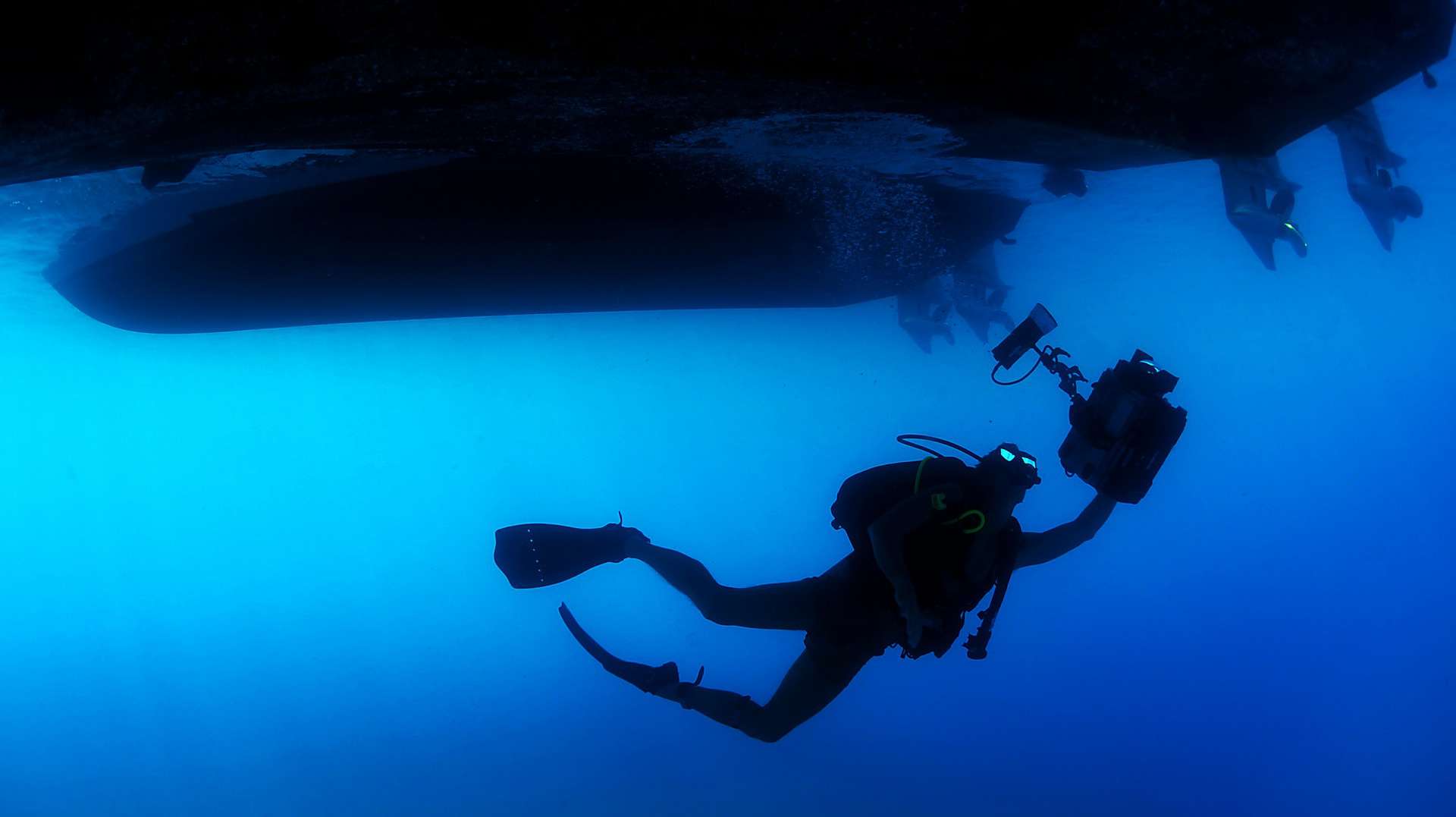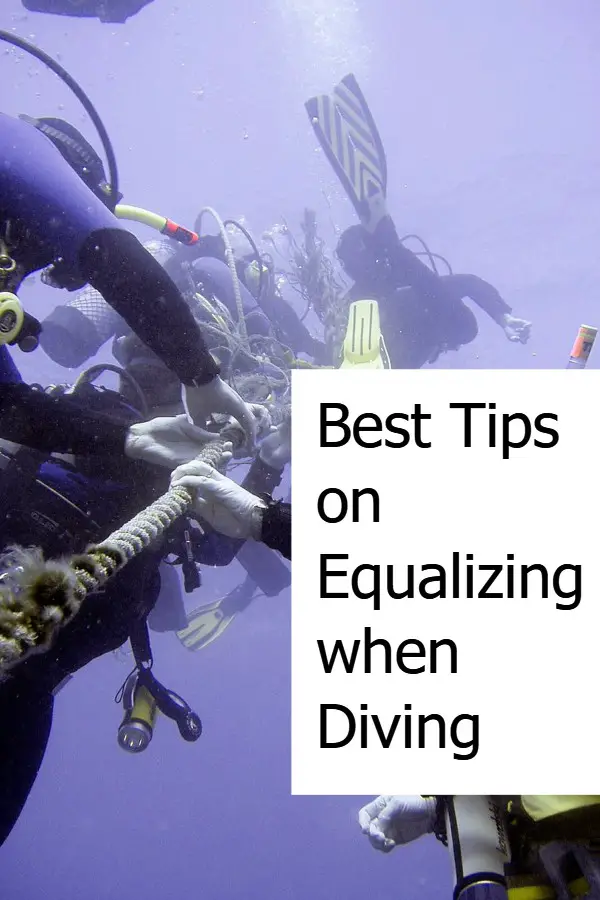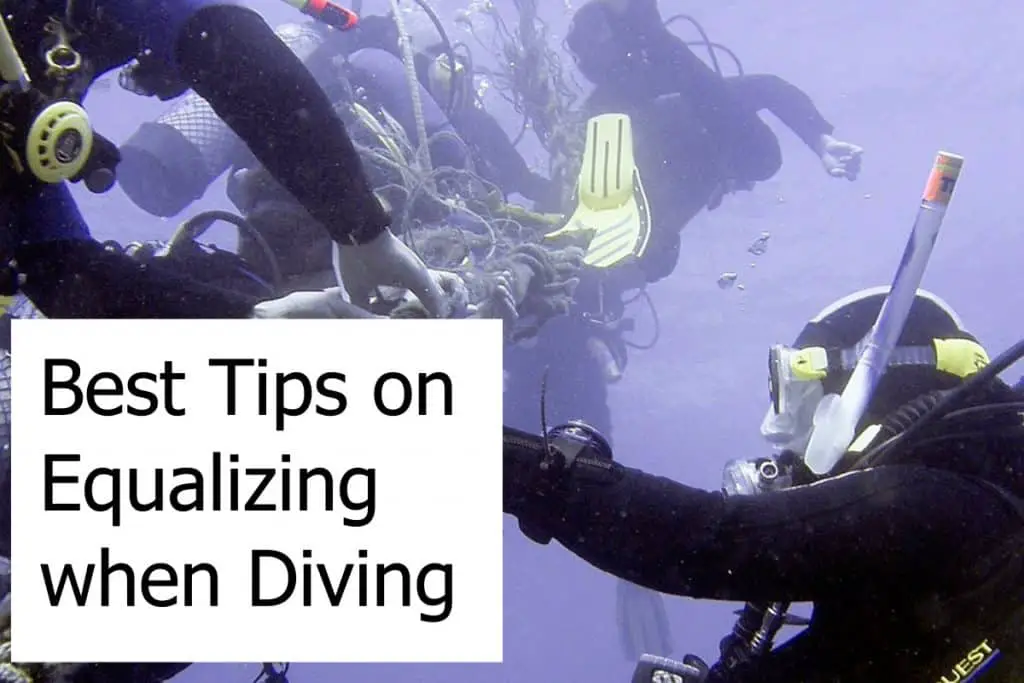Best Tips on Equalizing when Diving
As much as we love diving, we are land mammals that cross into a foreign world when going underwater. Part of this adjustment is that we have the need to equalize when we dive. Below we share the best tips on equalizing when diving to make it easier the next time you go down.
It’s the same principle when we fly in a plane and it ascends or descends and you feel pressure building up in your ear. Parents often tell their kids on a plane to blow into their nose, swallow or suck on hard candy. The principle is the same for flying as it is for diving.
While we’re surrounded by air, it needs a significant difference in height for us to have to equalize. Otherwise, we’d have to pop our ears every morning when we go from the bedroom down to the kitchen.
Underwater it’s a different story. Descending a distance that’s equal from going down one flight of stairs is definitely causing the need to equalize. That is due to the higher pressure of the surrounding water compared to air.
What is ‘Equalizing’?
The goal of equalizing is to pressurize the ear canal so it matches the pressure from the surrounding. During a descent, that means that you need to increase the pressure in the ear canal while on an ascent you need to decrease the pressure.
The pressurization of the ear canal is done through the Eustachian tube. This tube connects the back of the nose to the middle ear. When the need arises to adjust the pressure in the ear canal the tube opens up so that air can be forced into the ear canal or being taken out of it. You feel the ‘pop’ when the tube opens to let air in or out.
Equalizing Methods
There are various techniques that you can use to equalize. The most common one is called the Valsalva. It’s the one that every diver knows and is taught in diving courses. For this technique, you pinch your nose and then gently blow into it. This forces the Eustachian tubes to open and to equalize. Most dive masks are designed to let you squeeze your nose to equalize this way.
Besides the Valsalva method, there are a few other ways and techniques that you can use to equalize. Another method is to simply pinch your nose and swallow at the same time. This technique is called Toynbee. Due to the swallowing, the muscles in the back of your mouth tense and that opens up the Eustachian tubes. The swallowing also forces the tongue to press air against them which then results in equalizing your ears. It’s the safest and most natural way to achieve it.
A combination of the Toynbee and the Valsalva techniques is called Lowry. You pinch your nose and blow into it while you swallow. It’s probably one of the most effective ways to equalize but it can also be somewhat tricky to do. Especially when you have a regulator in your mouth!
The Frenzel maneuver is another viable method. You have to hold your nose. You then press your tongue against the back of your throat. While doing that you make the sound of the letter ‘K’. This forces your tongue upwards and forces air into the Eustachian tubes resulting in your ears popping.
The Voluntary Tubal Opening method is performed by contracting the muscles in the upper part of the back of your mouth and throat. Push your lower jaw forward and down at the same time. It’s practically the same as if you yawn with your mouth closed. This maneuver will pull the tubes open and allow the air to flow into your ear.
The Edmonds method is similar to the Voluntary Tubal Opening except that you only push your jaw forward instead of forward and down. It similarly forces the tubes to open to let air flow in or out of your ear. The Edmonds technique can easily be combined with the Valsalva to get a stronger effect.

You can combine any of these techniques with tilting your head from side to side. This will stretch one side of your neck which sometimes makes it easier to clear this side. Some divers get a similar effect when they look up while trying to equalize. The Eustachian tubes open more easily for them.
Tips on Equalizing when Diving
As we have looked at the methods to equalize, there are also some tips to make it easier in the first place. Be prepared and things will go easier when you’re underwater.
- Prepare for your dive and start to equalize a few hours before you go underwater. Simply swallow hard or chew gum to force you to swallow and make sure you feel the tubes open up.
- Make sure that you can open your tubes before you board the boat. Simply try to equalize and make sure you hear the ‘Pop’ when they do.
- Relax before the dive. Discuss any concerns with your dive buddy and calm yourself.
- Equalize just before you go into the water. This pre-pressurizing helps you get past the first few feet during your descent. This can also inflate your Eustachian tubes to slightly enlarge them.
- It’s easier to equalize when you descend feet first. There are studies that have shown that the Valsalva technique requires 50% more force when you are in a position where your head is down!
- To make it easier to open your tubes you can either look up or move your head from left to right. The stretching helps!
- Descend slowly and controlled. This allows your whole body to get used to the pressure. Use a descent line if available. This allows controlling your descent rate while it also helps you to stop quickly if you feel too much pressure.
- Equalize early and often. Stay ahead of the pressure increase. Don’t wait until you have to equalize but try to stay ahead of the curve.
- Be smart and stop if it hurts and your techniques don’t work. Slowly swim up a few feet and then try again. Do not suddenly try to go up and then down as it will not help. Going up and down a few feet and continuously equalizing during that time is more effective.
- Avoid mucus increasing foods like milk. Mucus can block your tubes and make it harder or even impossible to equalize.
- Similarly do not drink or smoke. Both alcohol and tobacco can increase the mucus production and that can block the tubes.
- Keeping your mask clear can help to prevent any water from going up your nose. Water in your nose can lead to increased mucus production.
- Lastly, don’t dive if you suffer from a cold or have a congested nose. Both can and will prevent you from being able to equalize and they will ruin your dive and cut it short.
Besides these tips always use common sense. Sometimes it’s just not your day. No matter what techniques you try, it’s not working. It’s smarter and better to abort the dive instead of risking your health and also risking the safety of your dive buddy. It’s the better choice, in that case, to take a break instead of risking your health and your buddy’s safety.


